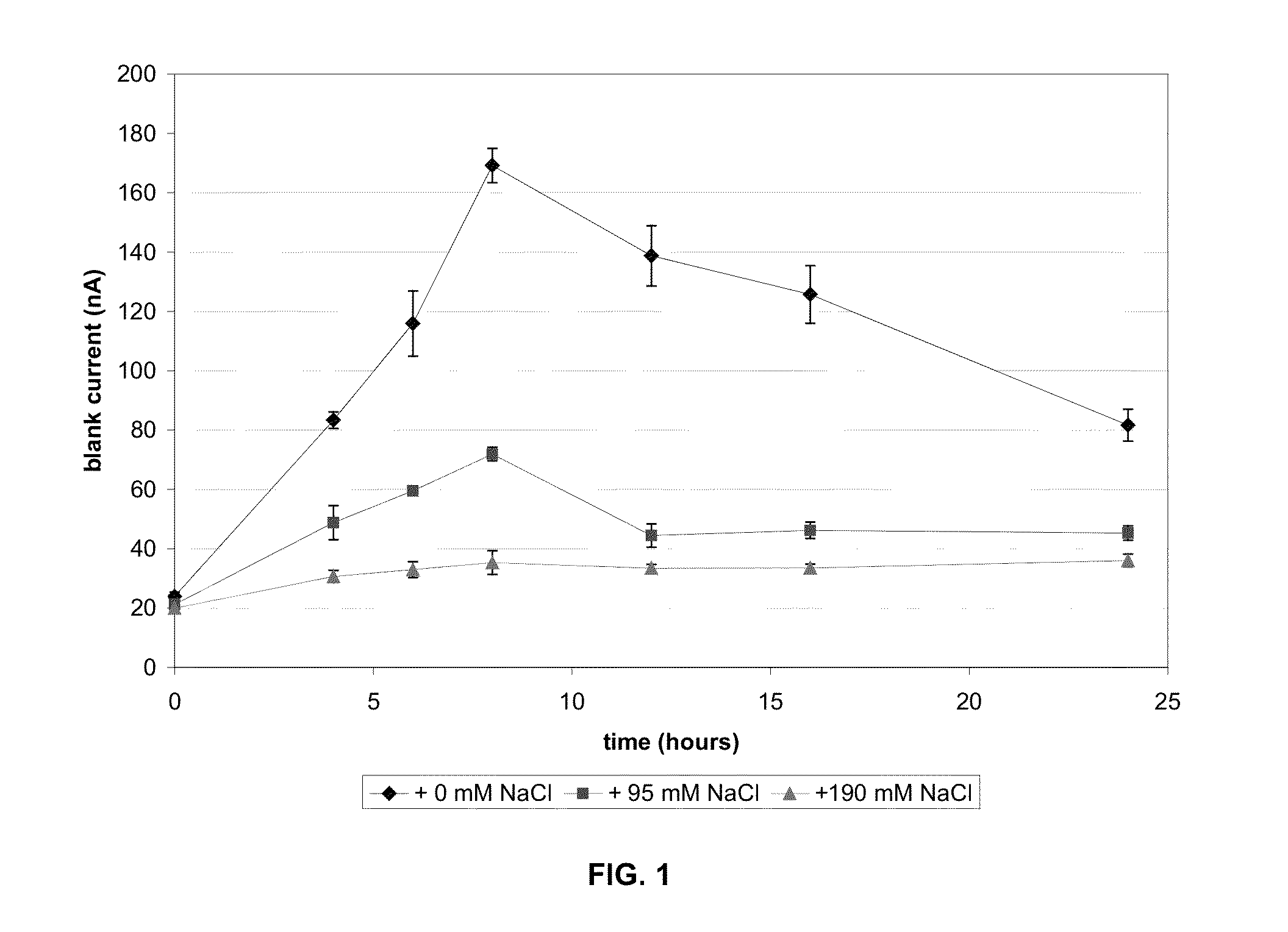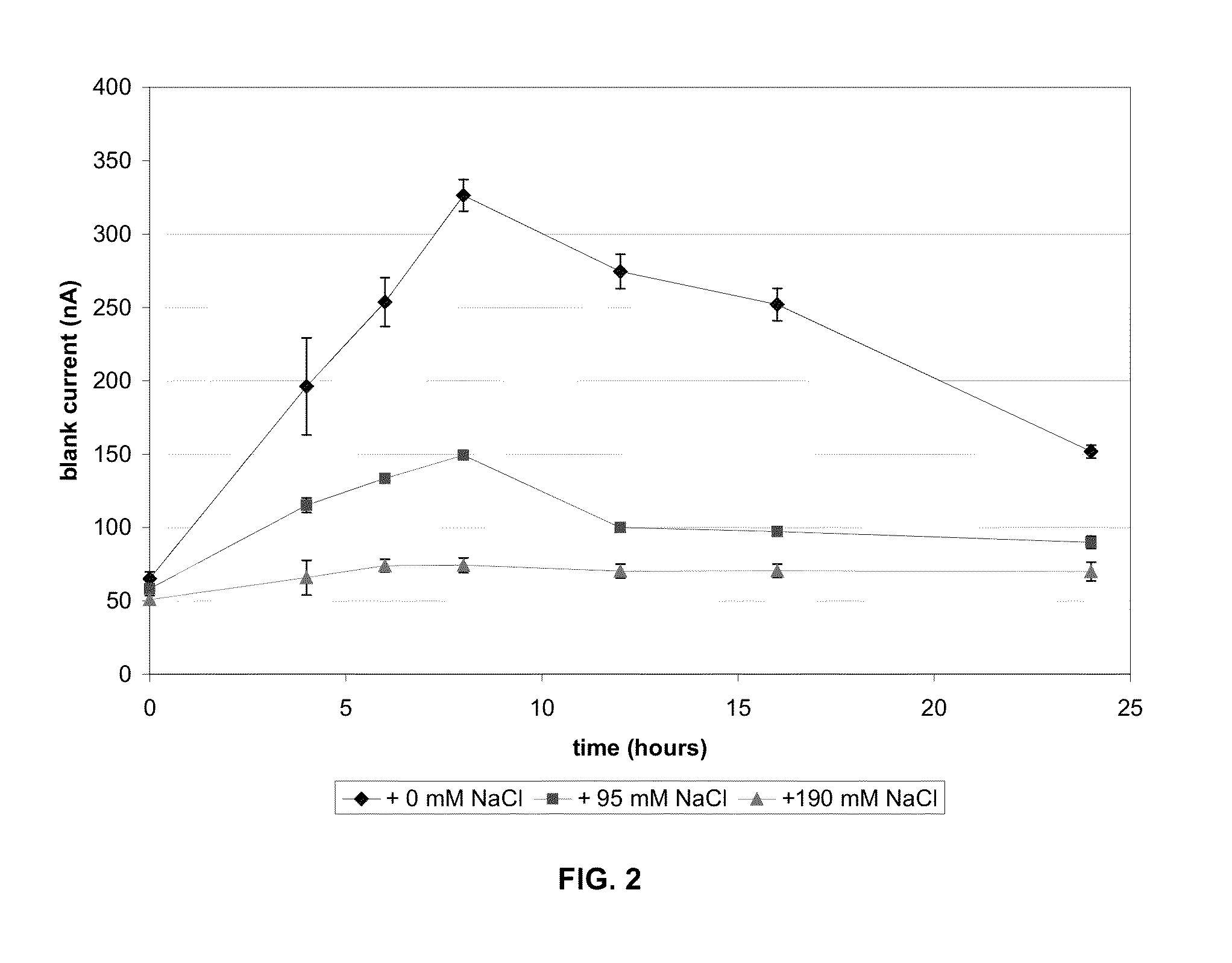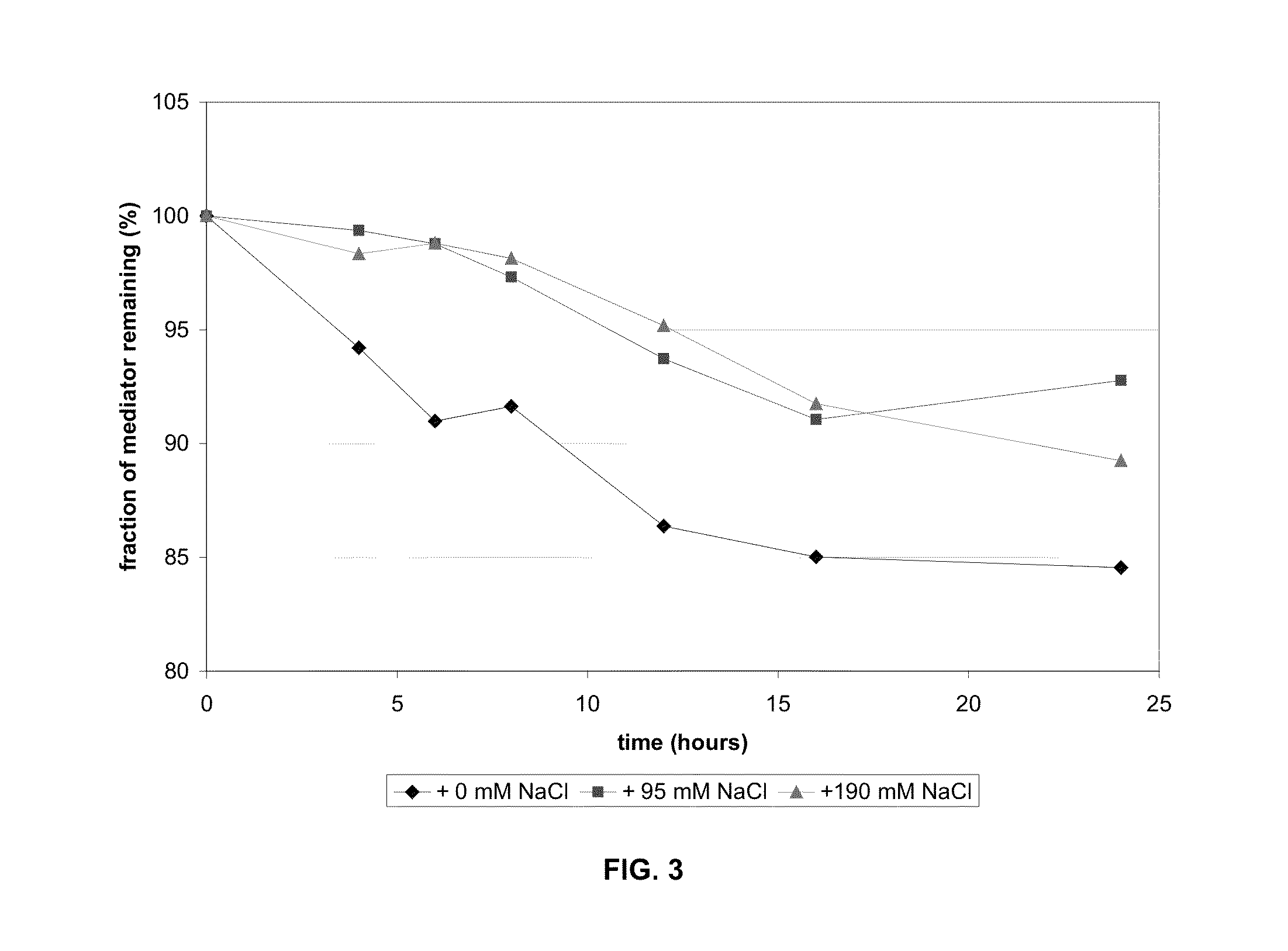Matrix Stability Compositions, Test Elements, Test Systems and Methods of Use Thereof
a technology of matrix stability and composition, applied in the field of matrix stability composition, test elements, test systems, can solve the problems of mediator enzyme degrading to the reduced form, serious diabetes-related complications, etc., to improve the stability of a dry-film reagent matrix, improve the stability of a test element, and reduce the sorption of water
- Summary
- Abstract
- Description
- Claims
- Application Information
AI Technical Summary
Benefits of technology
Problems solved by technology
Method used
Image
Examples
example 1
[0056]Sodium chloride was added to the reagent to increase the ionic strength of the reagent. The blank current in both aqueous solution and in unspiked blood was significantly decreased in formulations that contained additional sodium chloride when compared to the formulation that did not contain additional sodium chloride (e.g., FIGS. 1 and 2). Mediator stability as measured independently by HPLC was better in strips with the additional sodium chloride, as shown in FIG. 3. The result is increased stability of the reagent matrix. As shown in FIG. 3, increasing the amount of a deliquescent material such as sodium chloride in a reagent matrix increases the fraction of mediator remaining on the strip after exposure to high humidity.
example 2
[0057]Since exposure to high heat and humidity is known to cause mediator stability failure in glucose-specific test elements, the sorption behavior of PVP, sodium chloride, and mixtures of PVP and sodium chloride were studied. Such studies help characterize the sorption properties of the reagent matrix without studying the complete reagent matrix and are useful as a predictive tool for designing reagent matrix films with desirable water sorption characteristics.
[0058]The sorption isotherms of PVP and sodium chloride were measured and modeled, then compared with the measured sorption isotherms of mixtures of PVP and NaCl. Where appropriate, the measured data was modeled with the Flory-Huggins equation:
Inaw=Inφw+φP+XwP·φ2P,
where aw is the water activity in the gas phase (relative humidity), φ is the volume fraction of water (w) and polymer (P), and XwP is the interaction parameter between the water and polymer.
[0059]The measured values and literature values corresponded well for PVP,...
example 3
[0060]Sodium chloride does not adsorb appreciable amount of water below the deliquescence point. Accordingly, the amount of water adsorbed below the deliquescence point at relative humidity of 75% is, at most, a few molecular layers. Above the deliquescence point, the sodium chloride crystals dissolve and the concentration of the solution is a function of the water activity in the gas phase and is calculated as:
aw=γw·(1−Xs),
where Xs is the molar fraction of salt in the solution and γw is the activity coefficient.
[0061]The activity coefficient was calculated from literature values and found to follow the following relationship to the water molar fraction (equation, FIG. 5):
γw=−10.1757xw2+20.9601xw+9.7854.
PUM
| Property | Measurement | Unit |
|---|---|---|
| humidity | aaaaa | aaaaa |
| humidity | aaaaa | aaaaa |
| concentration | aaaaa | aaaaa |
Abstract
Description
Claims
Application Information
 Login to View More
Login to View More - R&D
- Intellectual Property
- Life Sciences
- Materials
- Tech Scout
- Unparalleled Data Quality
- Higher Quality Content
- 60% Fewer Hallucinations
Browse by: Latest US Patents, China's latest patents, Technical Efficacy Thesaurus, Application Domain, Technology Topic, Popular Technical Reports.
© 2025 PatSnap. All rights reserved.Legal|Privacy policy|Modern Slavery Act Transparency Statement|Sitemap|About US| Contact US: help@patsnap.com



